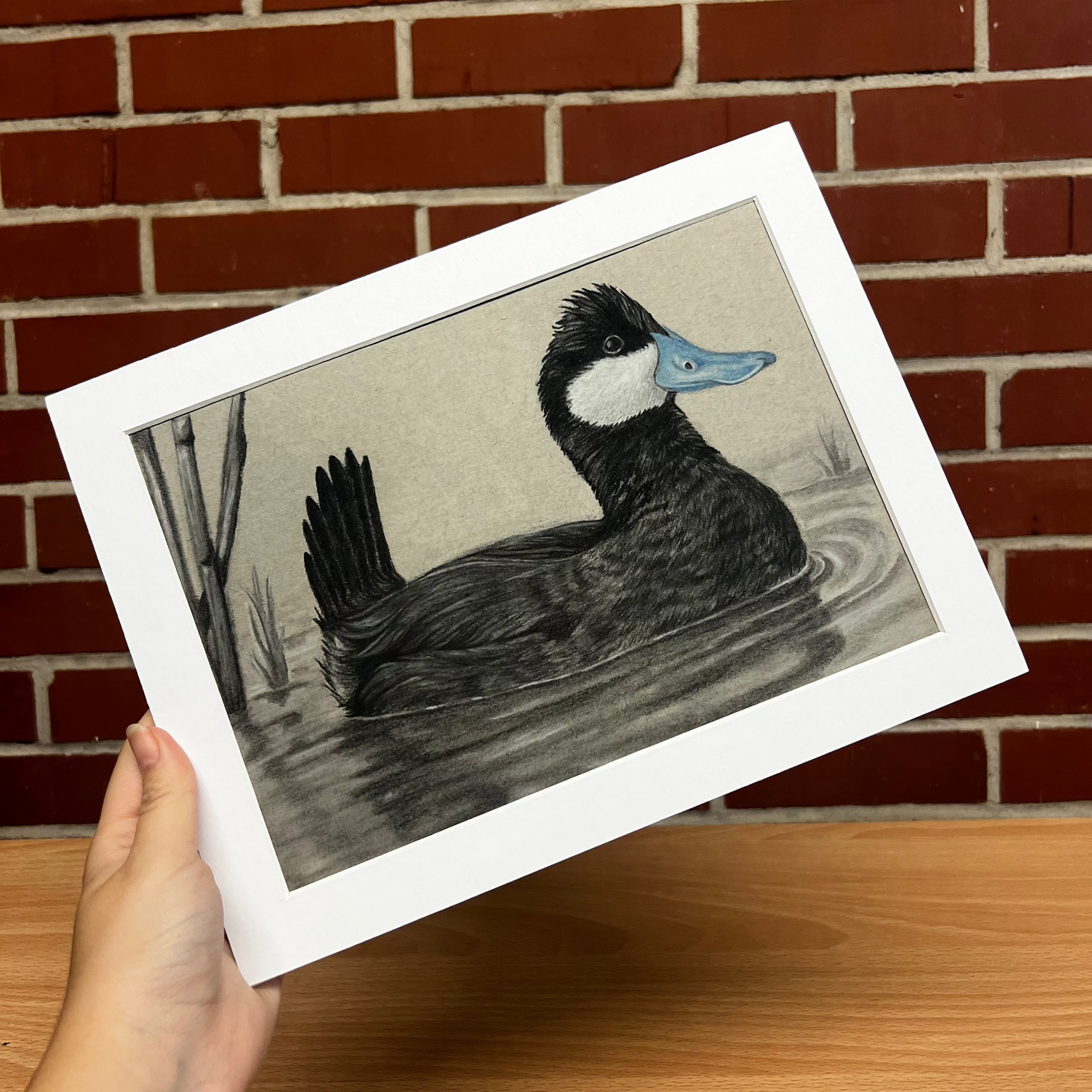
Ruddy Duck
Federal Duck Stamp Entry.
7" x 10" charcoal & pastel drawing created on grey-toned paper in 20 hours.
My 2025 Federal Duck Stamp Entry
This 7" x 10" charcoal drawing on grey-toned paper is more than just another bird study, it’s my official entry into the 2025 Federal Duck Stamp Competition, one of the most unique and impactful art contests in the country.
The ruddy duck, with its compact body and signature upright tail, immediately caught my attention. There’s something both comical and dignified about them, especially the males, who sport a vivid, electric-blue bill during the breeding season. That flash of color became the focal point of my piece, offering a bold contrast to the softness of the charcoal and the muted grey background.
While charcoal may be an unusual choice for this competition, where full-color paintings tend to dominate, I wanted to challenge that norm. Charcoal allows me to create depth and texture. The bright blue bill, added in pastel, brings a pop of color and life to the piece, staying true to the ruddy duck’s personality.
About the Federal Duck Stamp Competition
For those unfamiliar, the Federal Duck Stamp Contest is the only juried art competition sponsored by the U.S. government, and it’s open to artists across the country. Each year, artists are invited to submit a depiction of one of five eligible waterfowl species, and for 2025, the ruddy duck was among them.
But this isn’t just an art show. The winning design is turned into the next Federal Migratory Bird Hunting and Conservation Stamp, commonly known as the Duck Stamp. While waterfowl hunters are required to purchase it, many conservationists, birders, and art collectors buy it as well, because nearly 98% of the revenue goes directly to conserving wetlands and wildlife habitat across the United States.
Since 1934, sales of duck stamps have raised over $1.1 billion, protecting more than 6 million acres of habitat. It’s one of the most successful conservation programs in history, powered in part by artists who care deeply about wildlife and the places they call home.
Why the Ruddy Duck?
There’s something underdog-like about the ruddy duck, often overlooked in favor of more “noble” species like mallards or pintails. But their quirky posture, bold colors, and small but tough nature make them incredibly endearing to me.
They’re native to North America and spend time in freshwater marshes, where they dive for aquatic insects and vegetation. Despite their size, they’re expert divers and surprisingly fast flyers, though they prefer to stay low and close to the water.
Stay tuned for updates about the competition and my placement!
